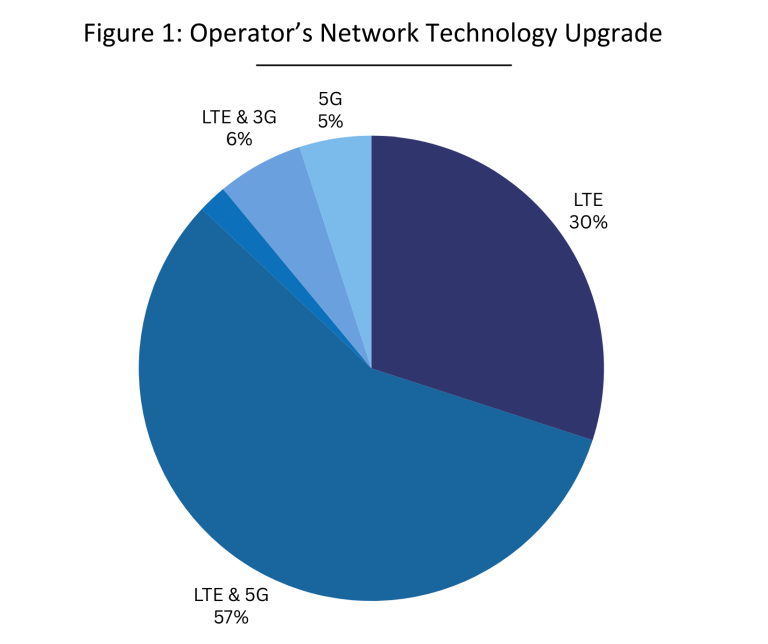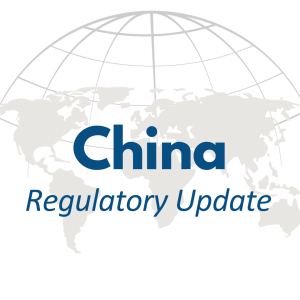The global shutdown of 2G and 3G networks has been a long-anticipated shift in the telecommunications landscape. Across the world, mobile network operators have either already phased out these legacy technologies or are actively working toward their decommissioning. For years, newer technologies like 4G and 5G operated alongside these older systems. However, the growing complexity and cost of maintaining aging networks have made their continued operation increasingly unsustainable for carriers and manufacturers alike.
As 2025 begins, the pace of decommissioning is accelerating, with major updates from countries adopting this transition at an unprecedented rate. According to the latest report from the Global mobile Suppliers Association (GSA), released in December 2024, the number of operators decommissioning 2G and 3G is expected to see over a 100% increase compared to 2024, marking 2025 as a pivotal year in the global shift toward modernized telecommunications infrastructure.
For manufacturers, staying informed on these developments is not just important—it’s essential to maintaining compliance and supporting next-generation technologies.
Why Are Countries Decommissioning 2G and 3G Technology?
The primary driver behind the 3G shutdown is to free up valuable frequencies for the deployment of more advanced networks like 4G and 5G. Many 2G networks operate on frequencies such as 850, 900, 1800, and 1900 MHz, with sub-1 GHz bands particularly prized for their coverage reach and ability to penetrate buildings.
Retiring older networks also reduces the cost and effort needed to maintain outdated radio infrastructure. For example, according to a study conducted by Nokia, 5G networks are approximately 90% more energy efficient than older networks per traffic unit.
In addition to cost savings and environmental benefits, simplifying network operations is another important consideration. While 3G was revolutionary in the early 2000s, helping to establish the modern wireless landscape, its limitations are evident today. Consumers now demand faster speeds, lower latency, and greater efficiency, which 4G and 5G networks are designed to deliver. By decommissioning 3G, telecom companies can repurpose the spectrum and continue to meet the growing data demands of the future.
Global Overview of 2G and 3G Shutdowns

Figure 1 shows the proportions of network upgrades: 56.8% of operators are transitioning to both 4G and 5G, 29.7% to LTE only, 5.4% to 5G, 6.3% to 3G and LTE, and 1.8% to a mix of 3G, LTE, and 5G, based on 111 operators based on a GSA report from December 2024.
According to the same report, 254 operators in 77 countries and territories have either completed, planned, or are phasing out their 2G and 3G networks. Breaking this down, 128 operators across 63 countries have either finished or planned to retire 2G, while 126 operators across 54 countries are doing the same for 3G.
Europe is leading the charge in this transition, followed by Asia and North America. However, Europe’s share of shutdowns has seen a slight dip since December 2023. As these older technologies wind down, the push toward 4G and 5G networks is accelerating. Currently, 56.8% of operators plan to adopt both technologies, 29.7% are opting for LTE-only upgrades, with smaller percentages moving to 5G or hybrid solutions involving 3G.
Regional Progress with 2G and 3G Shutdowns
Europe: Europe has been a leader in sunsetting legacy networks, with many operators targeting 2022 and 2023 for their 3G shutdowns. For example, Vodafone and Deutsche Telekom completed their 3G closures in Germany in 2021, and Telefonica is expected to follow soon. Across the region, 19 operators plan to complete the 3G phase-out by 2025, while some are simultaneously preparing to retire their 2G networks.
In the UK, the 3G shutdown timeline varies across providers. EE began shutting down 3G services in September 2023, while Vodafone is currently in the final phase of its 3G decommissioning, which is expected to be completed by the end of this year. O2 recently announced its plan to switch off 3G by 2025, aligning with the broader trend of network upgrades across Europe.
Asia: Several Asian countries, including Japan, South Korea, Taiwan, and Singapore, were early adopters in the transition away from 3G, beginning the process as early as 2019. However, other countries in the region have postponed their plans, with many now targeting 2025 to complete the shutdown of legacy networks.
The Americas: The U.S. has moved swiftly to retire its 3G networks. Major telecom providers like AT&T and Verizon completed their 3G shutdowns in February and December of 2022, respectively. The decommissioning of 2G networks is also progressing rapidly, with most operators having phased out 2G services. The U.S. has been at the front of this transition, ensuring network spectrum is repurposed for 4G and 5G advancements. Following a similar path to the U.S., major Canadian operators such as Bell, Telus, and Rogers began their 3G shutdowns in 2022.
Operators across Latin America are gradually dismantling their 2G and 3G networks as 5G continues to gain traction. The region faces varying conditions, leading to different shutdown timelines for legacy technologies. As 5G deployments progress in countries like Brazil, Chile, Mexico, the Dominican Republic, and Guatemala, other countries are also planning spectrum tenders.
Oceania: In Oceania, 2G has been nearly fully phased out. Australian providers completed their 2G network shutdown by the end of 2018. Now, attention has shifted to 3G, with Telstra planning to finalize its 3G network shutdown by the end of 2024. In New Zealand, Vodafone began shutting down 3G services in late 2023, marking the region’s continued movement toward more advanced technologies.
Africa: Africa remains a unique case, with only South Africa having announced plans to decommission 2G or 3G network so far. The slower pace of transition is due to a variety of factors, including economic challenges, social conditions, and the strong reliance on existing legacy networks. For many African nations, a gradual transition is necessary to maintain digital inclusivity.
Recent Country Updates Regarding 2G & 3G
Eswatini
The Eswatini Communications Commission (ESCCOM) has announced plans to retire 2G and 3G networks under the National Frequency Allocation Plan (NFAP). The 2G phase-out will run from December 1, 2025, to December 31, 2026, and 3G from December 1, 2027, to December 31, 2028. Importation and type approval of 2G- and 3G-only devices will cease by December 31, 2024. Operators must notify customers, decommission infrastructure, and submit progress reports to ESCCOM throughout the transition. Read more.
Macau
The Macau SAR Government has announced that 3G licenses for four mobile operators will expire on June 4, 2025, marking the discontinuation of 3G services. The Postal and Telecommunications Services Bureau (CTT) is urging users to transition to 4G or 5G-compatible services and devices. Operators are expected to facilitate a smooth transition for consumers and businesses ahead of the deadline. Read more.
Andorra
Andorra Telecom has announced the gradual shutdown of its 3G network beginning in October 2026. This move is part of a broader technological evolution, as 3G is being replaced globally by more advanced 4G and 5G technologies. After more than two decades in service, the 3G network has reached the end of its lifecycle, prompting Andorra Telecom to optimize both the efficiency of existing 4G and 5G networks and overall energy consumption. Read more.
Brazil
In 2024, Brazil’s National Telecommunications Agency (ANATEL) took significant steps toward retiring 2G and 3G technologies with the launch of Public Consultation No. 36/2024. These legacy networks, increasingly inadequate to meet modern digital service demands, are set to be phased out in favor of more advanced 4G and 5G technologies. The public consultation period, which runs until September 18, 2024, outlines a series of proposals to accelerate the shift. Read more.
Singapore
The shutdown of 3G in Singapore will affect devices relying on 3G for emergency calls, particularly older models registered before 2020. Users of these devices will need to upgrade to maintain service. Suppliers are required to update their listings, cease sales of incompatible handsets, and ensure compliance with the Infocomm Media Development Authority (IMDA) regulations. Read more.
South Africa
In 2023, South Africa announced its plan to phase out 2G and 3G networks, aiming for complete decommissioning by December 2027. This initiative, part of the Next Generation Radio Frequency Spectrum Policy for Economic Development, seeks to free up spectrum for 4G and 5G technologies. Key deadlines include prohibiting the approval of new 2G/3G devices last month and beginning the network shutdown by June 2025. While this transition modernizes infrastructure, challenges like device affordability and adapting machine-to-machine communications remain. Read more.
Qatar
In Qatar, the Communications Regulatory Authority (CRA) has mandated the shutdown of 3G mobile services by December 31, 2025, following consultations with key stakeholders. This decision aims to enhance telecom service quality by freeing up spectrum for expanding 4G and 5G networks. Additionally, the CRA has banned the import of 2G/3G-only devices, ensuring a shift toward 4G and VoLTE compatibility. Read more.
Vietnam
Vietnam is preparing to phase out its 3G networks by September 2028, following the global trend of moving away from older technologies to prioritize advanced 4G and 5G services. This strategic transition is aimed at enhancing the country’s telecommunications infrastructure and aligning with the technological advancements that are reshaping mobile communications worldwide. Read more.
Australia
In December 2023, TPG Group, Telstra, and Optus announced the phased shutdown of their 3G networks to support the expansion of 4G and 5G. Vodafone and TPG have already closed their 3G networks, while Telstra and Optus will follow on 28 October 2024. Both companies are launching public awareness campaigns to guide users through the transition. Read more.
New Zealand
One New Zealand (NZ) has delayed the planned shutdown of its 3G network by seven months, moving the date to 31 March 2025 to allow customers more time to transition to 4G and 5G. The operator also announced it will end its 2G network by the end of 2025, as traffic on the older network has significantly declined. Read more.
References
Deslandes, N. (2024, March 28). Businesses need to prepare for the sunsetting of 2G and 3G. TechInformed. https://techinformed.com/businesses-need-to-prepare-for-the-sunsetting-of-2g-and-3g/
Global 2G & 3G network closure dates. Kore Wireless. (2024, November). https://www.korewireless.com/2g-3g-network-sunset-dates
Global Mobile Suppliers Association. (2024, December 24). 2G-3G Switch-off December 2024. https://gsacom.com/paper/2g-3g-switch-off-december-2024/
GSMA. (2024). 2G-3G Sunset Guidelines. Global System for Mobile Communications Association, Version 2.0.



